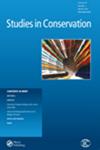Applied Conservation Practice Within a Living Heritage Site
IF 0.8
4区 化学
0 ARCHAEOLOGY
引用次数: 0
Abstract
ABSTRACT Over recent decades a more holistic view of cultural heritage has emerged, beyond simplistic tangible versus intangible dichotomies. Similarly, conservation has evolved from being material- to value-based, developing living heritage, people-centred and people-culture-nature approaches. As conservation interventions on objects, monuments and sites can affect an associated living culture and vice versa, conservators have a responsibility not only to understand tangible and intangible values, but also the local community and practitioners and bearers of tradition, by considering forms of ‘usage’ and ‘interaction’ with objects/monuments, identifying them before practical conservation starts. Whilst often constraining practice, living heritage can enrich professional work by encouraging participation and creativity through generating new, and adapting existing, approaches. This paper examines some (practical) implications of living heritage for conservation practice, by considering the Patan Durbar Square in Nepal, and the emphasis placed on continued use and community connection, to help conservators assume their social responsibilities and increase awareness of this issue.活文物遗址的应用保育实务
近几十年来,一种更全面的文化遗产观出现了,超越了简单的有形与无形的二分法。同样,保护也从以物质为基础发展到以价值为基础,发展活的遗产,以人为中心和人-文化-自然的方法。由于文物、古迹和遗址的保护措施会影响相关的生活文化,反之亦然,文物保护人员不仅有责任了解有形和无形的价值,而且有责任了解当地社区和传统的实践者和承载者,通过考虑与文物/古迹的“使用”和“互动”形式,在实际保护开始之前确定它们。虽然活遗产经常限制实践,但它可以通过产生新的和适应现有的方法来鼓励参与和创造力,从而丰富专业工作。本文以尼泊尔的帕坦杜巴广场为例,探讨了生活遗产对保护实践的一些(实际)影响,并强调了持续使用和社区联系,以帮助保护人员承担社会责任,提高对这一问题的认识。
本文章由计算机程序翻译,如有差异,请以英文原文为准。
求助全文
约1分钟内获得全文
求助全文
来源期刊

Studies in Conservation
化学-分析化学
CiteScore
1.80
自引率
12.50%
发文量
73
审稿时长
>12 weeks
期刊介绍:
Studies in Conservation is the premier international peer-reviewed journal for the conservation of historic and artistic works. The intended readership includes the conservation professional in the broadest sense of the term: practising conservators of all types of object, conservation, heritage and museum scientists, collection or conservation managers, teachers and students of conservation, and academic researchers in the subject areas of arts, archaeology, the built heritage, materials history, art technological research and material culture.
Studies in Conservation publishes original work on a range of subjects including, but not limited to, examination methods for works of art, new research in the analysis of artistic materials, mechanisms of deterioration, advances in conservation practice, novel methods of treatment, conservation issues in display and storage, preventive conservation, issues of collection care, conservation history and ethics, and the history of materials and technological processes. Scientific content is not necessary, and the editors encourage the submission of practical articles, review papers, position papers on best practice and the philosophy and ethics of collecting and preservation, to help maintain the traditional balance of the journal. Whatever the subject matter, accounts of routine procedures are not accepted, except where these lead to results that are sufficiently novel and/or significant to be of general interest.
 求助内容:
求助内容: 应助结果提醒方式:
应助结果提醒方式:


